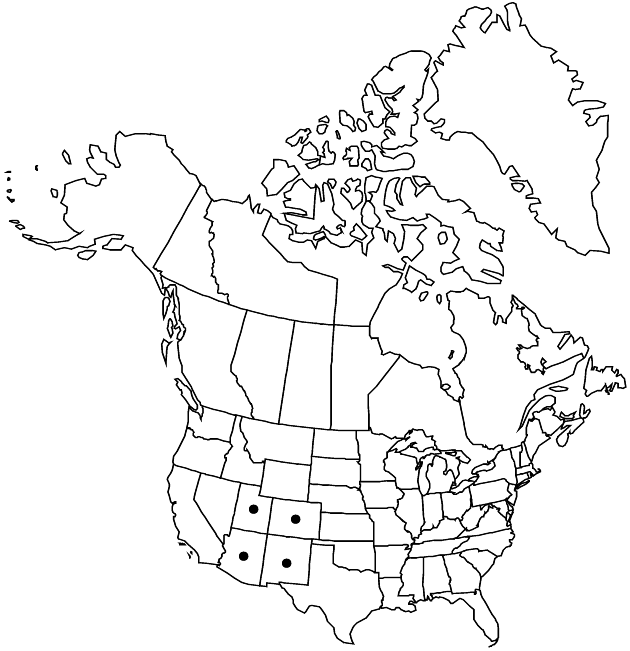Heterotheca villosa var. pedunculata
Brittonia 39: 383. 1987.
Stems erect, (12–) 30–50 (–75) cm, moderately to densely strigose, usually sparsely, rarely abundantly long-hirsute eglandular or sparsely stipitate-glandular. Distal cauline leaf-blades oblanceolate, (4–) 14–31 × (1.5) –3.7–8 mm, sometimes little reduced distally, margins flat, faces (pale green to white) densely strigose (hairs (42–270) /mm2), eglandular or sparsely stipitate-glandular (glands 20–49/mm2). Heads 1–18 (–39), in congested to open, usually corymbiform, sometimes subumbelliform arrays. Peduncles (7–) 12–40 (–58) mm, moderately to densely hispido-strigose, eglandular or sparsely stipitate-glandular; bracts few, linear-oblong, reduced distally, bracts subtending heads phyllary-like or none. Involucres cylindric to narrowly campanulate (fresh), (4.6–) 6.6–11 mm. Phyllaries lanceolate to narrowly triangular-lanceolate, margins often reddish purple distally, faces densely strigose, eglandular to sparsely glandular. Ray-florets 9–17 (–26), laminae (5.5–) 6.6–10.5 (–12) mm. 2n = 18, 36.
Phenology: Flowering (May–)Jun–Oct(–Nov in s).
Habitat: Sandy soils, ponderosa and fir-spruce forests, Upper Sonoran Zone (pinyon-juniper), mixed grasslands, disturbed areas, rocky outcrops, pastures, riparian habitats
Elevation: 1200–2900 m
Distribution

Ariz., Colo., N.Mex., Utah.
Discussion
Variety pedunculata usually has pale green to white, densely strigose, sparsely to moderately stipitate-glandular, oblanceolate leaves, and often long-pedunculate heads that are not subtended by large bracts. It hybridizes with var. minor throughout its range, and is similar to but more densely hairy than the more northern and eastern var. villosa.
Selected References
None.
Lower Taxa
"[" is not declared as a valid unit of measurement for this property."]" is not declared as a valid unit of measurement for this property.